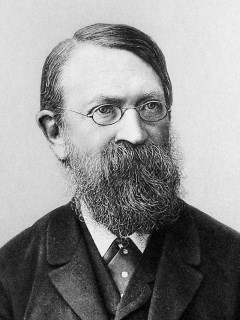
Publication details
Verlag: Springer
Ort: Berlin
Jahr: 2002
Pages: 185-198
Reihe: Vienna Circle Institute Yearbook
ISBN (Hardback): 9789048159765
Volle Referenz:
, "Physics without pictures?", in: History of philosophy of science, Berlin, Springer, 2002


Physics without pictures?
the Ostwald-Boltzmann controversy, and Mach's (unnoticed) middle-way
pp. 185-198
in: Michael Heidelberger, Friedrich Stadler (eds), History of philosophy of science, Berlin, Springer, 2002Abstrakt
It is a common view in cognitive psychology that there is a fundamental difference between what may be called descriptive information, on the one hand, and depictive information, on the other. While the first kind of information is — ideally spoken — non-pictorial and usually equated with the content of a proposition, the second kind of information is pictorial by defmition and accordingly equated with the content of a mental image. Granting the correctness of this distinction, cognitive scientists differ on the role played by mental images in epistemic processes. One faction, represented by the writings of Zenon Pylyshyn, asserts that mental images are merely an epiphenomenon of a more general and abstract processing system, and that they are in principle dispensable since they do not have any truth value.1 Another faction, represented by the writings of Stephen Kosslyn, favors the opposite view, maintaining that mental images are indispensable since they play, in spite of their lack of truth value, a fundamental role in human thinking.2 As Arthur I. Miller has proposed in his book Imagery in Scientific Thought (1986), these two factions may be labeled as the "antiimagist" and the "pro-imagist" view, respectively.3
Cited authors
Publication details
Verlag: Springer
Ort: Berlin
Jahr: 2002
Pages: 185-198
Reihe: Vienna Circle Institute Yearbook
ISBN (Hardback): 9789048159765
Volle Referenz:
, "Physics without pictures?", in: History of philosophy of science, Berlin, Springer, 2002


